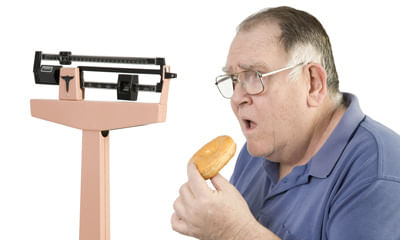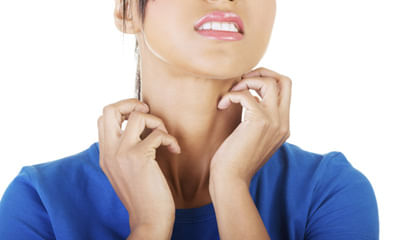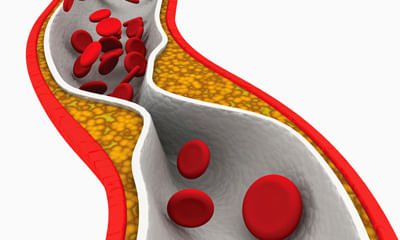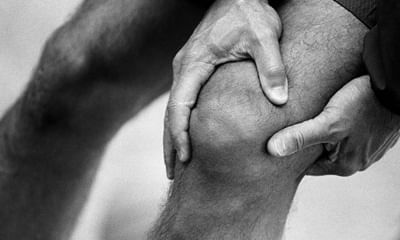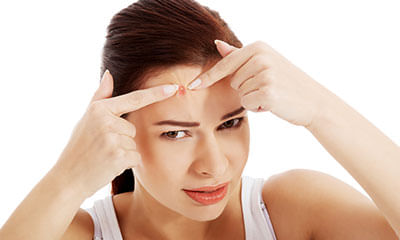How To Stop Sweating Between Legs
My sister hs pcos n she facing only acne issues on face back chest hands legs which tablet wilb betta dronis 20 or krims ...
Ask Free Question
it can be cleared...Acne or pimples... Due to hormonal changes..Oily skin causes it...Common in adolescent age...May occur in adults also.. Food like Oily foods, ice cream, chocolate and sweets increase it.. Treatment depends on the grade of pimples or acne..So, please send photos by direct online consultation as it's a must to see which grade of pimples or acne for accurate diagnosis and treatment.
I’m suffering from ring worm (tinea corporis) all over body - hands, thighs, chest, back, legs from 2 months have severe ...
Ask Free Question
Fungal infections in the groin and buttocks are commonly referred to as ringworm, jock itch or tinea cruris. They occur when certain types of fungi, such as dermatophytes, grow and multiply in warm and moist areas of the body, like the groin. Symptoms of a fungal infection in the groin may include: red, itchy rash: the affected area often becomes red, itchy, and inflamed. The rash may have well-defined edges and small, raised blisters or scales. Itching and burning: the rash can cause intense itching and a burning sensation, which can be uncomfortable. Peeling or cracking skin: the skin in the groin area may become dry, flaky, or start to peel. Odor: fungal infections can sometimes cause an unpleasant odor. If the symptoms persist or worsen despite self-care measures, it is advisable to consult a healthcare professional or dermatologist. They can provide a proper diagnosis and recommend appropriate treatment options, which may include prescription-strength antifungal medications.
I am g atta, age 46 weight 67, hight 6" 6'bp normal. I am diabetic but sugar under control. I have foot pain and leg mus ...
Ask Free Question
Greetings from ortho clinic, a diabetic diet in india is similar to a healthy balanced diet recommended for individuals with diabetes worldwide. The key principles of a diabetic diet involve managing carbohydrate intake, incorporating a variety of foods, controlling portion sizes, and promoting regular physical activity. Here are some general guidelines for a diabetic diet in india: 1. Carbohydrate management: - opt for complex carbohydrates such as whole grains (brown rice, whole wheat, millets), legumes, and vegetables. - limit the intake of refined carbohydrates like white rice, white bread, sugary drinks, and sweets. - monitor the quantity of carbohydrates consumed and distribute them evenly throughout the day. 2. Portion control: - control portion sizes to maintain a healthy weight and manage blood sugar levels. - use measuring cups, spoons, or a food scale to accurately measure portions. - include a variety of foods from different food groups to ensure a balanced diet. 3. Emphasize fiber-rich foods: - consume high-fiber foods such as whole grains, fruits, vegetables, legumes, and nuts. - fiber helps regulate blood sugar levels, improves digestion, and provides a feeling of fullness. 4. Healthy fat choices: - choose healthier sources of fats like nuts, seeds, avocados, olive oil, and fatty fish (such as salmon) rich in omega-3 fatty acids. - limit saturated fats found in red meat, full-fat dairy products, and fried foods. 5. Include lean proteins: - include lean protein sources such as skinless chicken, turkey, fish, low-fat dairy products, tofu, and legumes. - protein helps in building and repairing tissues, and it doesn't significantly impact blood sugar levels. 6. Limit added sugars and sugary drinks: - minimize the consumption of sugary foods, desserts, sweets, and beverages. - opt for naturally sweet foods like fruits and limit the intake of fruit juices. 7. Regular physical activity: - engage in regular exercise such as brisk walking, jogging, cycling, or any activity recommended by your healthcare provider. - physical activity helps in improving insulin sensitivity and managing blood sugar levels. It's important to note that these are general guidelines, and it's advisable to work with a registered dietitian or a healthcare professional to create a personalized diabetic diet plan based on your specific needs, preferences, and any other health conditions you may have. They can provide you with detailed guidance and help you make appropriate dietary adjustments. Please contact whats app mobile for free dietary reversal for diabetes.
I'm male of 54 years having height of 177 cm and weight 97 kg. I am having pain from planter fasciitis and when I checke ...
Ask Free Question
Stretching and strengthening exercises or use of specialized devices may provide symptom relief. These include: physical therapy. A physical therapist can instruct you in a series of exercises to stretch the plantar fascia and achilles tendon and to strengthen lower leg muscles, which stabilize your ankle and heel. A therapist might also teach you to apply athletic taping to support the bottom of your foot. Night splints. Your physical therapist or doctor might recommend that you wear a splint that stretches your calf and the arch of your foot while you sleep. This holds the plantar fascia and achilles tendon in a lengthened position overnight and facilitates stretching. Orthotics. Your doctor might prescribe off-the-shelf or custom-fitted arch supports (orthotics) to help distribute pressure to your feet more evenly. Injections. Injecting a type of steroid medication into the tender area can provide temporary pain relief. Multiple injections aren't recommended because they can weaken your plantar fascia and possibly cause it to rupture. More recently, platelet-rich plasma has been used, under ultrasound guidance, to provide pain relief with less risk of tissue rupture. Lifestyle and home remediesto reduce the pain of plantar fasciitis, try these self-care tips: maintain a healthy weight. Lose weight if you're overweight or obese to minimize stress on your plantar fascia. Choose supportive shoes. Avoid high heels. Buy shoes with a low to moderate heel, good arch support and shock absorbency. Don't go barefoot, especially on hard surfaces. Don't wear worn-out athletic shoes. Replace your old athletic shoes before they stop supporting and cushioning your feet. If you're a runner, buy new shoes after about 400 to 500 miles of use. Change your sport. Try a low-impact sport, such as swimming or bicycling, instead of walking or jogging. Apply ice. Hold a cloth-covered ice pack over the area of pain for 15 to 20 minutes three or four times a day or after activity. Or try ice massage. Freeze a water-filled paper cup and roll it over the site of discomfort for about five to seven minutes. Regular ice massage can help reduce pain and inflammation. Stretch your arches. Simple home exercises can stretch your plantar fascia, achilles tendon and calf muscles.
Hello Dr. I'm 56 old female. From past 1 year i'm suffering from itching in the legs and the area is turning into black ...
Ask Free Question
What r other symptoms that you r experiencing? By doing what like walking, exertion- itching increases or decreases in intensity. For how much time it remains? It can be because of dermatitis/ eczema or allergy or dryness or fungal infection or psoaiasis etc. I need details of case n preferably pics of affected area. In the meanwhile follow this moisturize frequently. Coconut oil and glycerine are good options. Avoid sudden changes in temperature or humidity. Avoid sweating or overheating. Reduce stress. Avoid scratchy materials, such as wool directly in contact with skin. Avoid harsh soaps, detergents, and solvents. Be aware of any foods that may cause an outbreak and avoid those foods. For this homeopathic treatment is very effective for more details consult online.
Homeopathic treatment for high uric acid, high cholesterol and weight loss because due to all this I am facing swear pai ...
Ask Free Question
Namaste! pully and shoulder wheeler and leg excerciser and walking and surya namaskar 20 times repitaion and sun bath 15 mint head sweatting and cycling and ohm channting daily 17 mint hota frigmentation and cold frugmentation heath bath 16 mint get well soon thank you.
My father is 48 years old, he is suffering from pain in his knees and his uric acid is always increasing and there is so ...
Ask Free Question
U should do-- watch your weight. Eat fresh fruit, vegetables, whole wheat products and some pulses (high in purine) every day. Enjoy low-fat milk and dairy products daily. Drink plenty of fluids. Avoid alcoholelevate your affected foot if you smoke, then stop it. Add more fiber to your diet. Eat more fruits, vegetables and whole grains, which provide complex carbohydrates. Avoid foods and beverages with high-fructose corn syrup, and limit consumption of naturally sweet fruit juices. Good sources of low-purine nuts and seeds include walnuts, almonds, flaxseeds and cashew nuts. U can take one handful of these nuts (mixed) everyday curd is very good for u. Homeopathic treatment has very encouraging results. Consult online for details.
Hi, I have 36 yrs, 1st time 2019 my uric acid was 8.1 and huge pain my right leg, now I have uric acid 8.9 but slight pa ...
Ask Free Question
People of any age, back pain can affect or different reasonsas people get older, the chance of developing lower back pain increases, due to factors such as previous occupation and degenerative disk disease. Lower back pain may be linked to the bony lumbar spine, discs between the vertebrae, ligaments around the spine and discs, spinal cord and nerves, lower back muscles, abdominal and pelvic internal organs, and the skin around the lumbar area. •acute pain starts suddenly and lasts for up to 6 weeks. •chronic or long-term pain develops over a longer period, lasts for over 3 months, and causes ongoing problems. Home advise: •resting from strenuous activity can help, but moving around will ease stiffness, reduce pain, and prevent muscles from weakening. •applying heat, ice, ultrasound, and electrical stimulation — as well as some muscle-release techniques to the back muscles and soft tissues — may help alleviate pain. •as the pain improves, the physical therapist may introduce some flexibility and strength exercises for the back and abdominal muscles. Techniques for improving posture may also help. •the patient will be encouraged to practice the techniques regularly, even after the pain has gone, to prevent back pain recurrence. Regular exercise helps build strength and control body weight. Guided, low-impact aerobic activities can boost heart health without straining or jerking the back. Before starting any exercise program, talk to a health care professional. There are two main types of exercise that people can do to reduce the risk of back pain: •core-strengthening exercises work the abdominal and back muscles, helping to strengthen muscles that protect the back. •flexibility training aims at improving core flexibility, including the spine, hips, and upper legs. We suggest you to wear lumbosacral corset (belt) which is available at our clinic. If you want you can buy from us, if you are far away from chennai we can send you by courier. The reason why we are conveying you to buy from us is we can demonstrate over the videocall (using whatsapp) and also we can monitor you throughout when to wear it and how long to wear it. And also if you find any difficulty wearing the brace you can also revert back to us for few more suggestions and we can propose you good solution how to go about it. Uses of lumbosacral corset (belt) a lumbosacral corset adds pressure to the intra-abdominal area. This adds stability to the spine. It is prescribed to people suffering from moderate to severe pain. Other benefits of using a lumbar spine belt are: 1.helps in a certain degree of immobilization of facet joints. 2.reduces pain to allow continuation of normal activities. 3.speeds up the healing process. 4.the pressure exerted by a lumbar spine belt helps in stretching the erector spine muscles. 5.this belt can also be used to support the lower back while exercising. Ohelps prevent rolling oprovides stability to lumbar and sacral regions of the back ocan be used when performing actions like lifting and handling heavy items ocan also be used when playing sports orestricts back movement to aid treatment of back problems do’s and don’ts sitting do: • sit as little as possible and then only for short periods. • place a supportive towel roll at the belt line of the back especially when sitting in a car. • when getting up from sitting, keep the normal curves in your back. Move to the front of the seat and stand up by straightening your legs. Avoid bending forward at the waist. • try to keep the normal curves in your back at all times. Don’t: • do not sit on a low soft couch with a deep seat. It will force you to sit with your hips lower than your knees and will round your back. You will loose the normal curve in your back. • do not place your legs straight out in front of you while sitting (e.g. Sitting in the bath tub). Standing do: • if you must stand for a long period of time, keep one leg up on a foot stool. • adapt work heights. Don’t: • avoid half bent positions. Lifting avoid lifting if you can. Do: • use the correct lifting technique. Keep your back straight when lifting. Never stoop or bend forward. Stand close to the load, have a firm footing and wide stance. Kneel on one knee, keeping the back straight. Have a secure grip on the load and lift by straightening your knees. Do a steady lift. Shift your feet to turn and do not twist your back. Don’t: • do not jerk when you lift. • do not bend over the object you are lifting. Lying do: • sleep on a good firm surface. • if your bed sags, use slats or plywood supports between the mattress and base to firm it. You also can place the mattress on the floor, a simple but temporary solution. • you may be more comfortable at night when you use a pillow for support. Don’t: • do not sleep on your stomach unless advised to do so by your doctor or physical therapist. Bending forward do: • keep the natural curves of your back when doing these and other activities: making a bed, vacuuming, sweeping or mopping the floor, weeding the garden or raking leaves. Coughing and sneezing do: • bend backwards to increase the curve of your back while you cough or sneeze. Driving a car do: • drive the car as little as possible. It is better to be a passenger than to drive yourself. • move the seat forward to the steering wheel. Your seat must be close enough to the wheel to keep the natural curves of your back. If your hips are lower than your knees in this position, raise yourself by sitting on a pillow. Exercises for low back pain safety guidelines • an increase in your low back pain can be expected with these exercises. This is acceptable as long as your leg symptoms are not increasing. • if while doing these exercises, your pain worsens or you have new pain or symptoms, stop the exercises and discuss your symptoms with your doctor or physical therapist. • stop exercising and let your doctor or physical therapist know right away if you have any change in your bowel or bladder control or any increase in weakness in your leg or foot. Exercises ‰ •press-ups: keep your back and buttocks relaxed and use your arms to press up. Concentrate on keeping your hips down and push up your upper body as high as possible. •double knee to chest: grasp both your knees with your hands and pull toward your shoulders. Hold the stretch for 1 second. Let your knees return, but keep them bent at arms length. ‰ •lumbar spine stretches: lie on your back. Bring your knees towards your chest. Rotate your knees towards the pain. •side-lying position: lie on your side and face forward. Have both arms straight in front and bend your knees. Turn your head as you move your top arm across your body as far as you can. Keep your arm in place and turn your head back to the starting position. Look back again and turn your head farther if you can. Bring your head and arm back to the starting position. Relax and repeat 10 times on each side. •hamstring stretch: lie on your back with your legs out straight. Raise your leg up and put your hands around the upper leg for support. Slowly straighten the raised knee until you feel a stretch in the back of the upper leg. Hold, then relax and repeat 10 times on each leg. •standing arch: stand with your feet apart and hands on the small of your back with fingers pointing backwards. Bend backwards at the waist, supporting the trunk with your hands. Keep your knees straight. Hold for 5 seconds. Repeat 3 to 5 times. Side glides: stand at a right angle to the wall about 2 feet o eliminate your pain improve your muscular endurance and strength attain better posture, balance, body awareness and co-ordination improve your balance and flexibility learn to lift properly. posture when standing: make sure you have a neutral pelvic position. Stand upright, head facing forward, back straight, and balance your weight evenly on both feet. Keep your legs straight and your head in line with your spine. Posture when sitting: a good seat for working should have good back support, arm rests and a swivel base. When sitting, try to keep your knees and hips level and keep your feet flat on the floor, or use a footstool. You should ideally be able to sit upright with support in the small of your back. If you are using a keyboard, make sure your elbows are at right-angles and that your forearms are horizontal. Shoes: flat shoes place less of a strain on the back. Driving: it is important to have proper support for your back. Make sure the wing mirrors are properly positioned so you do not need to twist. The pedals should be squarely in front of your feet. If you are on a long journey, have plenty of breaks. Get out of the car and walk around. Bed: you should have a mattress that keeps your spine straight, while at the same time supporting the weight of your shoulders and buttocks. Use a pillow, but not one that forces your neck into a steep angle.
Age 28 female suffering with acne scars and pimples (including white heads and black heads) mainly on full face, chest, ...
Ask Free Question
Acne or pimples. Due to hormonal changes. Oily skin causes it. Common in adolescent age. May occur in adults also. Food like oily foods, ice cream, chocolate and sweets increase it. Treatment depends on the grade of pimples or acne. So, please send photos by direct online consultation as it's a must to see which grade of pimples or acne for accurate diagnosis and treatment.
Sir my mother is having these following problems. 1.all of a sudden sweating and feeling cold as well. 2.muscle pain and ...
Ask Free Question
Age? Are her periods regular or stopped? Get your thyroid profile, cbc, blood sugar fasting checked from some lab. In the meanwhile follow this 1. Don't take tea empty stomach. Eat something like a banana (if you are not diabetic) or any seasonal fruit or soaked almonds and a glass of water first thing in the morning (within 10 mins of waking up). No only biscuits or rusk will not do. 2. Don't overeat 3. Take your breakfast every day. Don't skip it. U should eat whatever your mother or grandparent eat in bfast. I mean to say whatever is your traditional food. If punjabi eat paratha, if belongs to south then take idli/ dosa etc. 4. Have light meals every 2 hours (in addition to your breakfast, lunch n dinner) e.g. Nariyal paani, chaach, a handful of dry fruits, a handful of peanuts, any fresh n seasonal fruit, a cup of curd/milk etc 5. Finish your dinner at least 2 hours before going to sleep. 6. Maintain active life style7. Avoid fast foods, spicy n fried foods, carbonated beverages 8. Take a lot of green vegetables n fruit. 9. Drink lot of water.10. Everyday preferably sleep on same time exercise in the form of yoga, cycling, swimming, gym etc.For more details, you can consult me.


